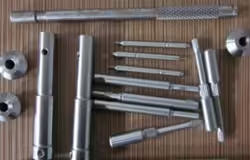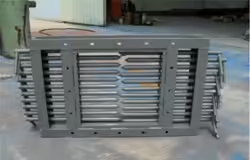
Avoid These 6 Steel Billet Traps Today
Table of Contents
Introduction
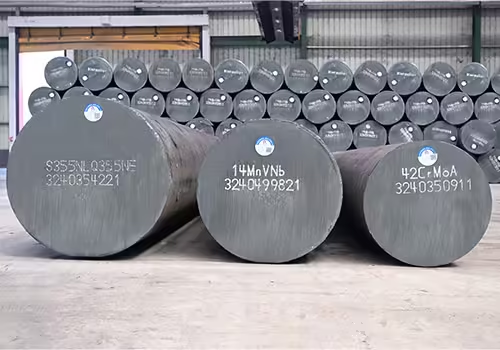
Steel billet is a foundational component in the production of various metal goods. Used in forging, extrusion, rolling, and other industrial processes, this semi-finished steel product plays a crucial role in the manufacturing chain. However, due to its critical nature, mistakes made during the procurement, inspection, or handling of steel billet can have costly and long-lasting consequences.
Choosing the right supplier, understanding material specifications, and ensuring proper quality control are essential to maintaining production efficiency and avoiding unnecessary financial loss. In this article, we uncover six of the most common steel billet traps and provide actionable advice on how to avoid them. Whether you’re a seasoned buyer or new to the industry, this guide will help you make smarter purchasing decisions.
Trap 1: Misunderstanding Steel Billet Grades
One of the most common pitfalls in selecting steel billet is failing to fully understand the range of available grades and their specific compositions. Steel billet grades vary significantly in terms of chemical makeup, tensile strength, ductility, and application suitability. Making the wrong choice could result in mechanical failure, structural weaknesses, or increased wear in high-load environments.
How to Avoid This Trap:
- Carefully review technical datasheets for the steel billet in question.
- Match your application requirements to the billet’s material properties, such as carbon content, yield strength, and toughness.
- Consult metallurgical engineers or material science professionals to ensure you’re not overlooking crucial factors like fatigue resistance or weldability.
By aligning billet grades with the end-use specifications, you can reduce risk and increase production reliability.
Trap 2: Ignoring Dimensional Tolerances
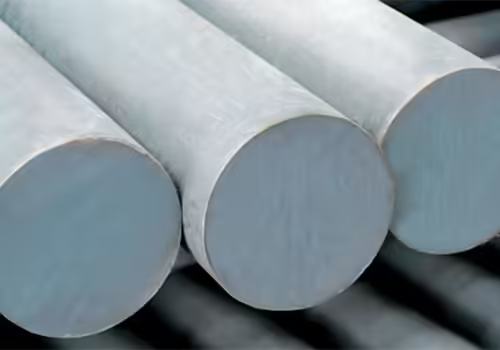
Dimensional accuracy is not just a technical requirement—it’s a foundational pillar of efficient manufacturing. Steel billets serve as the raw foundation for a wide range of downstream products including bars, rods, seamless tubes, flanges, and precision-forged components. Even slight deviations from specified dimensions can cascade into larger problems during processing, from increased machining times to complete production halts.
Why Dimensional Tolerance Matters
Every manufacturing process has built-in tolerances. These define the permissible limits of variation in a physical dimension and are crucial for ensuring compatibility between parts. In the case of steel billets, exceeding dimensional tolerances can lead to:
- Machine Jams or Malfunctions: Oversized billets can damage rolling or extrusion machines.
- Material Waste: Undersized billets may fall below weight requirements and be unusable.
- Tool Wear and Damage: Poor fit leads to irregular force distribution, accelerating wear and tear on expensive tooling.
- Assembly Issues: Misaligned parts or joints reduce structural integrity or require rework.
Key Considerations for Dimensional Accuracy
- Adherence to Global Standards: Ensure your supplier complies with international standards such as ASTM A615, ISO 9443, or equivalent. These norms define acceptable dimensional ranges based on billet size and application.
- Inspection Protocols:
- Request dimensional tolerance reports or third-party inspection certificates for every batch.
- Use in-house calipers, micrometers, or coordinate measuring machines (CMMs) for cross-verification.
- Third-Party Quality Checks:
- When dimensional precision is critical (e.g., aerospace or medical applications), a third-party inspection agency ensures neutrality and credibility in the measurement process.
- Partner with inspection firms that follow ISO/IEC 17020 standards for impartial inspection services.
- Establish Incoming Quality Control (IQC):
- Create standardized protocols for incoming billet assessment.
- Maintain historical dimensional performance logs by supplier.
The Bottom Line
Dimensional non-conformance doesn’t just waste material—it jeopardizes your timelines, budgets, and customer satisfaction. Investing in precision at the source saves exponentially more down the line.
Trap 3: Overlooking Surface Quality and Defects
While much attention is often placed on the internal metallurgical properties of steel billet, its surface quality is equally vital. Surface imperfections such as cracks, pitting, scale, rust, and decarburization can severely affect machining quality and lead to rejections or safety issues in finished products.
Ways to Spot and Prevent Surface Issues:
- Perform regular visual inspections and use tools like ultrasonic testing for deeper defect analysis.
- Demand mill test certificates (MTCs) that specifically mention surface inspection results.
- Partner with suppliers known for delivering consistent and well-documented surface quality.
Failing to address surface issues early can introduce significant inefficiencies later in the production process.
Trap 4: Falling for Unverified Suppliers
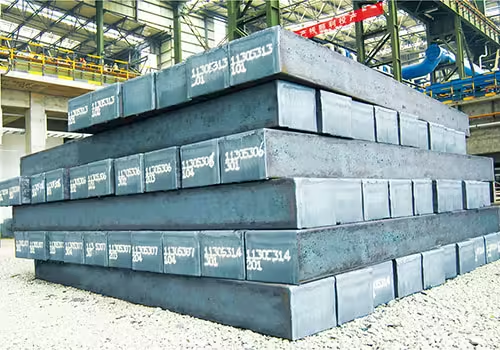
In the fast-paced global market for steel billets, procurement teams often face immense pressure to reduce costs. While pricing is a valid concern, falling for the lowest bidder without proper due diligence is one of the most dangerous traps in steel sourcing. Unverified suppliers may offer attractive quotes but often cut corners on quality, documentation, and delivery commitments.
The Risks of Unverified Suppliers
- Substandard Material Quality: May use recycled or impure scrap steel that lacks uniformity.
- Lack of Traceability: Inability to trace billet origin can lead to legal and compliance issues.
- Delayed Shipments: Poor logistical planning or low prioritization for international buyers.
- No After-Sales Support: Issues like defective billets or incomplete paperwork go unresolved.
How to Vet Suppliers Effectively
| Verification Step | What to Check |
|---|---|
| Certifications | ISO 9001, ISO 14001, OHSAS 18001, and specific product-based accreditations |
| Documentation | Business license, MTCs, product specifications, heat treatment records |
| On-Site Audit | If possible, conduct in-person or virtual audits to inspect facilities and production lines |
| Client Feedback | Look for real client testimonials, case studies, and reviews on third-party platforms |
| Sample Orders | Begin with a small batch to test quality, delivery time, and communication responsiveness |
Tools for Supplier Verification
- Alibaba Gold Supplier Status
- D&B (Dun & Bradstreet) Business Reports
- Third-party platforms like SGS, BV, or TÜV for factory audit services
- Blockchain-based traceability platforms for transparency in steel sourcing
Red Flags to Watch For
- Reluctance to share certifications or references
- Vague product specifications or contradictory documentation
- Lack of response to quality-related queries
- Overly aggressive price cuts without explanation
The Bottom Line
Your steel billet supplier is not just a vendor—they are an extension of your production team. Working with unverified suppliers is a gamble that can lead to shipment delays, non-compliant materials, and customer dissatisfaction. Invest time in verification now to avoid massive costs later.uity.
Trap 5: Underestimating the Impact of Logistics
Steel billet is dense and heavy, making logistics a complex aspect of the supply chain. Improper handling or storage during transit can introduce damage such as chipping, corrosion, or even complete material degradation. Furthermore, delays in delivery due to poor planning can halt your production line.
Logistics Best Practices:
- Confirm that the supplier uses industry-standard packaging techniques such as end capping and strapping.
- Ensure all billets are protected with moisture-resistant materials to avoid rusting during shipment.
- Set up a protocol to inspect all incoming shipments for physical damage or corrosion before storage or use.
Well-planned logistics protect the billet’s integrity and prevent operational disruptions.
Trap 6: Neglecting Cost-to-Performance Balance

It’s tempting to opt for the cheapest steel billet available, especially in large-volume procurement. However, low-cost options often fail to deliver consistent quality, leading to increased scrap rates, frequent machine downtime, and more frequent maintenance cycles. These hidden costs far outweigh the initial savings.
Strategic Cost Management:
- Assess total cost of ownership by considering durability, process compatibility, and expected yield.
- Conduct trials to evaluate how different billets perform under actual operating conditions.
- Prioritize suppliers that offer technical consultation and quality guarantees.
Long-term value should always take precedence over short-term savings in billet procurement.
Table: Comparing Reliable vs Unreliable Steel Billet Suppliers
| Criteria | Reliable Supplier | Unreliable Supplier |
|---|---|---|
| Quality Certifications | ISO 9001, ASTM, EN standards | Lacking or unverifiable credentials |
| Surface Quality | Smooth, defect-free surfaces | Cracks, rust, surface irregularities |
| Delivery Punctuality | On-time, with proper documentation | Frequent delays, missing paperwork |
| Material Traceability | Heat numbers, test certificates provided | No traceability or fake documentation |
| Technical Support | Offers metallurgical consultation | No after-sales or tech support |
| Pricing Transparency | Detailed quotes with breakdowns | Vague pricing, hidden charges |
Conclusion
Avoiding these six common traps can help ensure your supply chain remains efficient, reliable, and cost-effective. From verifying supplier credentials to understanding the technical specifications of steel billet, due diligence is essential. When you focus on performance, long-term costs, and material traceability, you’re more likely to end up with a product that supports your business success rather than hinders it.
Whether you’re new to the industry or refining your procurement process, always remember that steel billet is more than just a commodity—it’s a building block of quality and durability in countless applications.
FAQ
What is steel billet used for?
Steel billet is used as a raw material for rolling into bars, rods, and other structural shapes. It’s a crucial step in producing long steel products.
How can I verify the quality of steel billet?
Request mill test certificates, dimensional inspection reports, and conduct third-party lab tests when necessary.
What’s the difference between billet and bloom?
Billet typically has a smaller cross-section than bloom and is used for smaller rolled products. Blooms are used for larger structural shapes.
How does billet composition affect performance?
The chemical makeup of a billet determines its hardness, ductility, and corrosion resistance. Matching the right composition with application needs is critical.
Can steel billet be customized?
Yes, depending on the supplier, you can order custom grades, sizes, and surface finishes tailored to your application.





